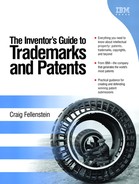Invention Team Core Members and Objectives
An invention team is a group of interested and skilled individuals who decide to meet regularly to develop inventions. Members of the team have unique skills and capabilities that they draw upon in interacting with each other while working on several different inventions at the same time.
The members of an invention team work closely together, and as shown in the Figure 4-4, they should enjoy spending time with each other testing their inventions and interacting with one another. Team-building interactions and activities, as shown in the Figure 4-5, help to build team spirit among the team members. With practice, refinement, and the right type of environment that fosters thought leadership—productivity of an invention team can soar.
Figure 4-4. The Edison invention team staff in its Menlo Park, New Jersey, lab in 1880 (photo courtesy of the Smithsonian Institute).

Figure 4-5. The Edison invention team staff members enjoy time together riding their experimental train (photo courtesy of the Smithsonian Institute).

The psychological atmosphere of the place partook of the inspirational, as a sort of reflex of Edison's genius, which was happily joined with a common sense and a commendable human nature that made him . . . “one of the boys.” . . . Here breathed a little community of kindred spirits, all in young manhood, enthusiastic about their work, expectant of great results; moreover often loudly emphatic in joke and vigorous in action.
—Charles Clarke, Edison employee.
For relaxation, it has been told that Edison would occasionally play an organ located against the back wall of this lab, especially when the men slowed down for a midnight snack or meal after long evenings of work. There were often energetic sing-along sessions, storytelling periods, and practical jokes and pranks played on each other. Edison would organize fishing trips, sometimes using the lab's experimental electric train for transportation to a local fishing hole.
Let's explore some member roles and team interactions noted in this type of phenomenal teaming approach. The invention team consists of the leadership team, technical writers, technology specialist(s), and patent defense team members. These individuals interact to create new ideas and to develop these new ideas into invention descriptions.
Leadership Team
The leadership team's role is to coordinate the multiple inventions being developed in parallel by multiple team members. Sometimes, an invention team will consciously decide to take on a large number of inventions. Often, when this is done, it is because many of the inventions have causal impacts on the others, so separating the intellectual property is key. Managing the property well is important to keep the team from creating prior art against itself.
When creating bulk invention sets with many inventors, consider doing them all at the same time and compiling a notebook. In this notebook, place all of the details surrounding the problem, the solution, and the novelty of each invention. Be prepared to explain the differences in the claims and how they may or may not relate to each other.
This multiple invention approach will introduce complexities to the teaming effort, but these complexities can be managed. The leadership team will help to manage innovation amongst the team and to ensure that the team is working in healthy ways to achieve the goal.
Technical Writers/Technology Specialists
The invention team technical writer(s) provide very core support to their team by demonstrating their critical writing skills, especially with regard to semantics and understanding of documentation. They participate in inventor exchanges and effectively listen to this interchange of inventors' ideas. They contribute to this intellectual property development activity in their documentation, contextual expansions, and other critical skills areas only excellent writers can provide. This role is also very helpful for individuals who have a desire to learn the inventing process.
In this role of technical writer, one learns how to articulate the claims in such a way that each shows novelty: This is a challenge and nontrivial for even the best writers. This role is very critical to the team, and, generally speaking, this role should involve one or more individuals who are excellent in their expression of language. As an example, the ratio of technical writers on an invention team may be 1:4—that is, one writer for every four inventors. In this same area, an invention team may also want to include one or more inventors with a role of creating/writing marketing collaterals, depending on the nature of the invention. If a team intends to market their invention ideas, this step is a necessity. These collaterals might include a Web site, prototype examples, white papers, and product/services abstracts.
The invention team technology specialists seek to identify new areas of inventor interests related to technologies. These individuals maintain the goal of locating topic areas where many high-value inventions might be found. Often times, new technology can be studied and analyzed, whereby areas of the technology can be identified that require new ideas to efficiently assist the technology in some way. Inventors can pursue these areas with sometimes great results in yielding many inventions in a single topic area.
Patent Defense Members
The invention team patent defense members are critically skilled members who provide defensive thinking when the invention is being challenged, either by a team member, a patent attorney, a patent agent, or simply for reasons of strengthening the idea. The goal is to defend the idea by outlining strengths of the inventions, spotlighting the novelty and non-obvious points—while at the same time articulating the invention's problem, solution, and novelty.
